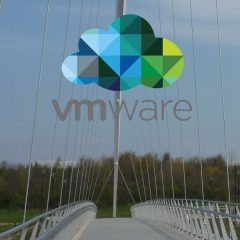McAfee MOVE AV Multi-Platform Issue – MOVE AV Protection Disabled
MOVE AV KB ID 0000980 Problem There are a number of reasons for you seeing this error, you will see this even if the Offload server(s) are shut down. In my case it was a new deployment, and the Windows firewall on the MOVE Offload server was blocking communication. McAfee Updater OK MOVE AV Multi-Platform Issue – MOVE AV Protection Disabled Solution : Move AV Below I will configure the Windows firewall on my MOVE Offload...
CentOS TFTP Server (Install and Configure)
CentOS TFTP Server KB ID 0000998 Problem I needed to back up a Cisco firewall, and perform an upgrade remotely, despite my best efforts to use the ASDM and update via http, I had to go ‘old school’ and bring up a TFTP server on one of my CentOS Linux servers. Solution CentOS TFTP Server 1. Log onto the server and install the xinetd TFTP Server. Execute the following command and follow the on-screen prompts. Using username...
VMware – Setting up ESX NTP Time Sync
ESX NTP KB ID 0000798 Problem Having your ESX Server running the correct time is quite important, and before you visit this subject, I would suggest you MAKE SURE the time is set in the ESX Servers BIOS, ie the internal clock is set correctly first. I’ve lost count of the amount of times I’ve seen Windows domains fall over because the ESX host has reverted to its BIOS time and replicated that time to its guests, suddenly your...
Windows – Setting Domain Time
Domain Time KB ID 0000112 Problem If you have arrived here, you have either noticed that the time is wrong on your server(s) or client PC(s), or you have looked in the event viewer and seen one of the following events being logged. Event ID’s 12, 22, 29, 36, 38, 47, and 50. Time Problem Events – On the PDC Emulator Event ID 12 (W32 Time Time Provider NtpClient: This machine is configured to use {text omitted}, but it is...
Remote Connect to macOS
KB ID 0001539 Problem Remotely connecting to Windows is easy we’ve had RDP since Windows NT4, (yes I’m that old). But what if you want to remote connect to a mac? Well that has ‘Screen Sharing’ built in, (which it pretty much the same, but it uses VNC). If you’re unfamiliar with VNC, (Virtual Network Computing,) you can install it on both Windows and Linux. Normally you need a client, (to connect with)...





